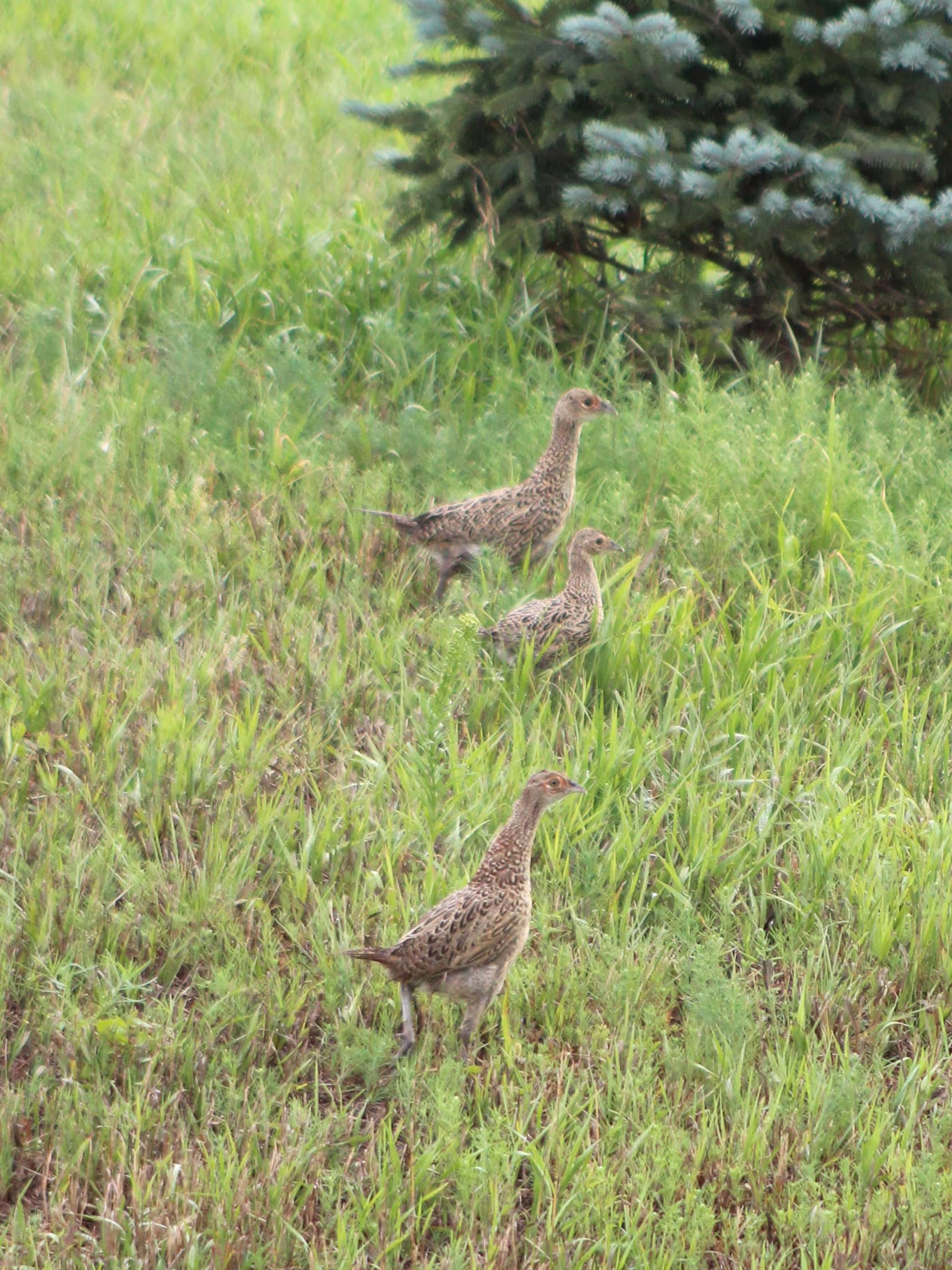
A trio of pheasant chicks run through the roadside grass near Bismarck. Simonson Photo.
By Nick Simonson
With summer conditions trending fair, and a shot of moisture at the season’s midpoint to help stretches of the state rebound from a minor drought early on, things are setting up well over most of North Dakota for pheasant recruitment.
Early indications from roadside reports conducted by the North Dakota Game & Fish Department (NDG&F) show positive trends throughout much of the state in terms of brood numbers and size. This includes the southwest, which historically has been the primary range for pheasants in Roughrider Country, but in recent years has struggled to rebound from the drought of 2017 due to lack of habitat to support a return to prominence among upland hunters’ favorite bird.
“With less miles driven, we’ve already seen more adults, more females, more young, more broods in total per mile and the brood size is over one chick bigger than last year, so that’s good, and that’s statewide,” reported NDG&F Upland Game Biologist RJ Gross on the early results of the agency’s pheasant survey.
Regionally, Gross is optimistic about improvements in the southwestern corner of the state, referencing a solid comeback where both chicks and total pheasants per mile are up in the regular routes driven by agents of the NDG&F. In the southeast, however, wet conditions continue to conspire against surveyors as a number of routes remain underwater, inundated from heavier summer rains and a wet fall in 2019, with even some of last year’s farm fields still standing, which influence whether or not birds come out near roads during the survey period which runs from late July to the end of August.
The southeast saw increases over the last two years, so Gross relates a dip in count numbers – whether situational with the type of cover on the landscape or influenced by the wet conditions hampering hatches and recruitment – hasn’t been unexpected.
Ten days remain in the NDG&F’s annual survey in which biologists, wardens and other employees of the agency drive historic routes and count pheasants, grouse, partridge, mourning doves and other game to get an idea of where populations of these species stand heading into fall. The data is compiled and published by the agency to help hunters get an idea of what to expect in the field for the upcoming season. One of the major environmental influencers on what surveyors see, is the amount of dew in the grass that forces hens and their broods out onto the roadside edges where they dry off and can be counted.
This year, Gross relates that dew conditions have not been ideal on many days for those tallying pheasants on the landscape.
“It’s been a little concerning as far as the survey, as most people know that the survey is based on dew, and they need dew on the grass in the mornings for the pheasants to come out; and especially around Bismarck, there hasn’t been any in the last couple of weeks, so I would assume that’s influencing counts a little bit,” Gross explained while remaining optimistic for a change in the weather and referencing back that despite the lack of dew, numbers were still up in the survey so far.
The 2020 NDG&F roadside survey will wrap on Aug. 31. From there, Gross compiles the data coming in from the dozens of routes around the state and puts together the agency’s predictions as to populations of pheasants available for hunters in the primary pheasant regions of North Dakota’s southwest, northwest and southeast corners, and their secondary range in the northeast. Hunters can expect a full report by mid-September.
For more information on pheasant hunting in North Dakota and results of the survey when they’re released, head to gf.nd.gov/hunting/pheasant.
